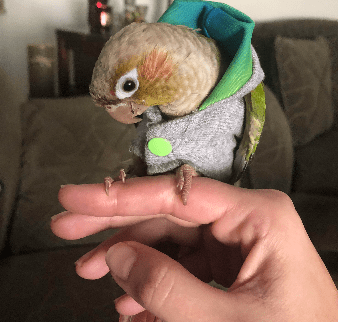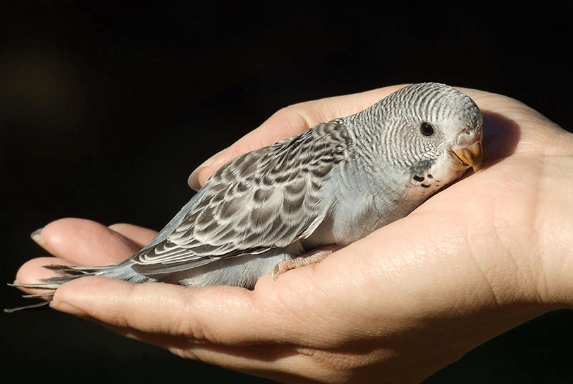Do you love to keep parakeets as your pet? Do want to be an aviculturist? Do you want to keep and breed parakeets? If the answer to all these questions is yes then you need a complete guide, how can you keep your budgies warm. To know this you must go through the article “How to keep parakeets warm?”. So, let us begin.
Parakeets are exotic birds. They are small and charming birds, found only in certain regions of the world. It is because of the narrow temperature ranges, to keep your parakeets healthy and fit. How to keep parakeets warm is the most frequently searched question. Before knowing this, you must know do parakeets get cold easily.
If yes then how do I know if my parakeet is cold should be the next question that you should rise. Knowing the answer you must search what temperature is too cold for parakeets. When you got all the answers then, “how can I keep my budgies warm” is must known information.Getting all the basic information about the environmental requirements of a parakeet, you can keep them as pets or become an expert aviculturist.
Also check:
Should i Get A Parakeet? | Yes or No?
How To Keep Parakeets Warm?
The wild parakeets sleep in the holes of trees. Parakeets can also make their nest in the abandoned branches of the trees, that have been died or fallen off. These provide a dark as well as a safe place for parakeets, to hatch their eggs and raise their offsprings.
To provide a natural environment to your parakeets’ pets, hang a warming nest for parakeets, inside their cage. These warming nests are floccose and warm mini rooms for parakeets. Parakeets can get into these rooms when it’s warm outside.
To make your parakeets habitual to these warming nests, place some treaty meals inside it for few weeks. These nests also provide the perfect temperature for parakeet breeding.
Parakeets can amuse, play, and relax in a moderate environment of warming nests. They can also keep their eggs and young ones safe from external environmental changes like winds.
Do Parakeets Get Cold Easily?
Yes, Parakeets get cold easily. Parakeets have a brave and hardy intrepid spirit, that makes them capable to bear hardships and fatigue. On the other hand, weather changes may affect parakeets, especially the cold weather.
Parakeets cannot bear a temperature as low as 40 degrees Fahrenheit or below. Temperature below 40 will be uncomfortable for this little bird. Such low temperature can be life-threatening and parakeets can get a severe illness or even die.
Parakeets belong to warmer climates of the world, that’s why the parakeets kept at home are also adaptable only to similar temperatures. About 60-70 degrees Fahrenheit temperature is the most suitable and best survival temperature for parakeets. Due to this temperature restriction, there are no parakeets in North America. The only parakeet species called “Carolina Parakeet” found in North America is absent since the 1920s.
Captivated parakeets do not need to adapt to external changing temperatures, so they are less resilient. They are less capable to withstand the temperature striking changes and extreme climatic conditions. It is better to say parakeets are very selective in their environment choices. They are not as versatile in climatic conditions as in food choices.
Some owners claim that they have kept parakeets at temperatures below 40 degrees, but it is an exceptional case and not the recommended one. It can only happen when you are already living in a cold place, with striking changes in day and night temperatures. It is not advised to keep parakeets in a stressful and risky environment. Otherwise, it might be cruel behavior for such little, feathered birds.
Also check:
What fruits and vegetable parakeets can eat? | let’s feed your parakeet
How Do I Know If My Parakeet is Cold?

How do I know if my parakeet is cold? It is very important to know when your parakeet cannot bear the temperature and need warmth. When your parakeet commoves its feathers to cover itself, then your parakeet might be feeling cold.
Parakeets also fluff up when they are going to sleep. It is quite confusing that whether they are feeling cold or going to sleep. If you see the same parakeet’s behavior especially, during the day, then make sure that your room’s temperature is not too cold.
A cold parakeet will repeatedly put his head down or insert his beak in his chest. He may also tremble. While sleeping, parakeets have one-foot curled underneath them, relying only on the other one.
Your parakeet will be cold, if he got both the symptoms at the same time i.e., sleeping on both feet and puffed feathers. In this way, you can easily define the cause of puffing, which can be sleeping or cold
During sleep time, a parakeet stuck his head in one wing under normal circumstances. The parakeet might be cold if he is hiding himself in the cage’s corner, just as a child huddle himself in a blanket.
As your relationship will grow with this pet, you will have a better understanding of him. You will get accurate signals about his response to the cold. You can then provide him comfort accordingly. Just focus on his habits and actions more and more.
Also check:
What can you feed a parakeet | Complete Parakeet Food Guide
What Temperature is Too Cold for Parakeets?
There is no proper scientific research, on the tolerable minimum temperature for parakeets. The article is based on the information collected from aviculturists or vets. Temperature around 40 degrees Fahrenheit or below is too cold for parakeets.
Most of the domesticated birds are kept in large flight or aviary cages. Keeping birds outdoor has many benefits like sunshine, fresh air, and exercise, however, they must face the day and night temperature fluctuations.
Parakeets can comfortably tolerate the coldness of nights only up to 40 degrees. The cold tolerance level largely depends upon the bringing up of your parakeet. Whether you have made your parakeet adaptable to the cold environment, by slowly moderating its temperature towards cold. You should expose him now and then to such temperatures, then your parakeet will get greater stability at such temperatures.
In short, what temperature is too cold for parakeets, largely depends on the environment, you have provided your bird since the beginning.
How Can I Keep My Budgies Warm?

You can keep your budgies warm by covering the cage with a blanket or a comforter. The blanket should be big enough to completely cover the cage, without leaving any air inlet space.
If you keep your budgie near a window, then it’s best to change his position at night. The outside cold temperature cannot affect you through a closed window, but budgies are sensitive enough to get its effect, even when the window is closed.
When the cold temperature is too disturbing, then it is better to invest and buy a budgie heat lamp. This small investment will keep your bird away from cold, thereby preventing illness or even death. It’s good to take the right decision at right time.
Bird-safe heat lamps, of many brands, areavailable in the market and online stores. You need to choose a good one for your budgie.
These lamps should be kept outside the bird’s cage, but very close to it. The budgie warmer can get very hot and harm the budgie if he touched it.
You can also go for heated perches for budgies, to keep your birds warm. You can install heated perches inside the cage. Make sure that your heated elements are insulated from rain and water. Your budgie may get a shock in that case. Adjust the temperature according to your surrounding temperature and budgie’s requirement. Let your budgie enjoy.
Also check:
All About Parakeets As Pets | Everything That You Should Know
Takeaway
Parakeets are small sensitive birds, versatile in food choices but too narrow temperature ranges. Temperature below 40 degrees can cause respiratory diseases like coughing, sneezing, e.t.c. To keep your parakeets warm, you can use the above-mentioned tactics. In case of slightly cold temperature, you need only to cover the cage with a blanket. Extreme cold can only be handled using budgie’s warmer like heated perches for budgie, budgie heat lamps, and warming nests for parakeets.
